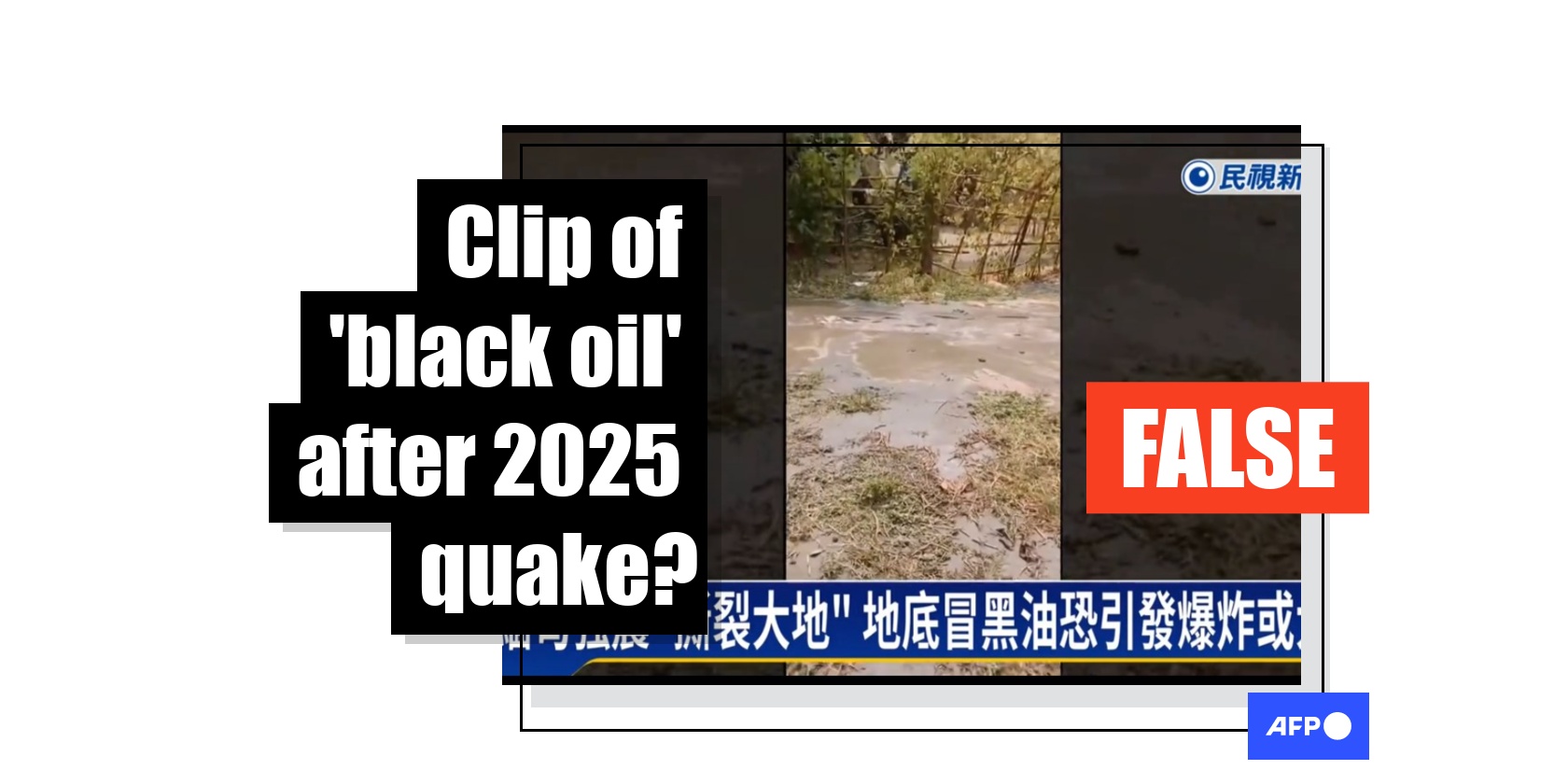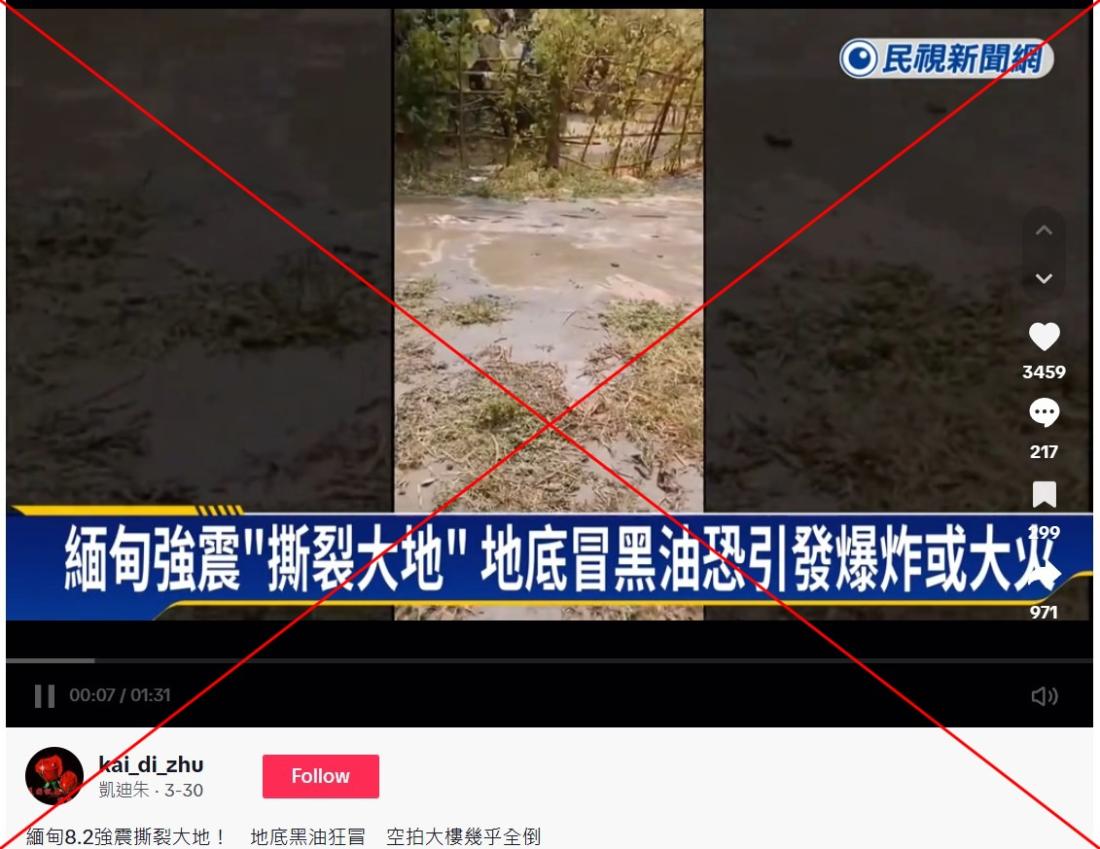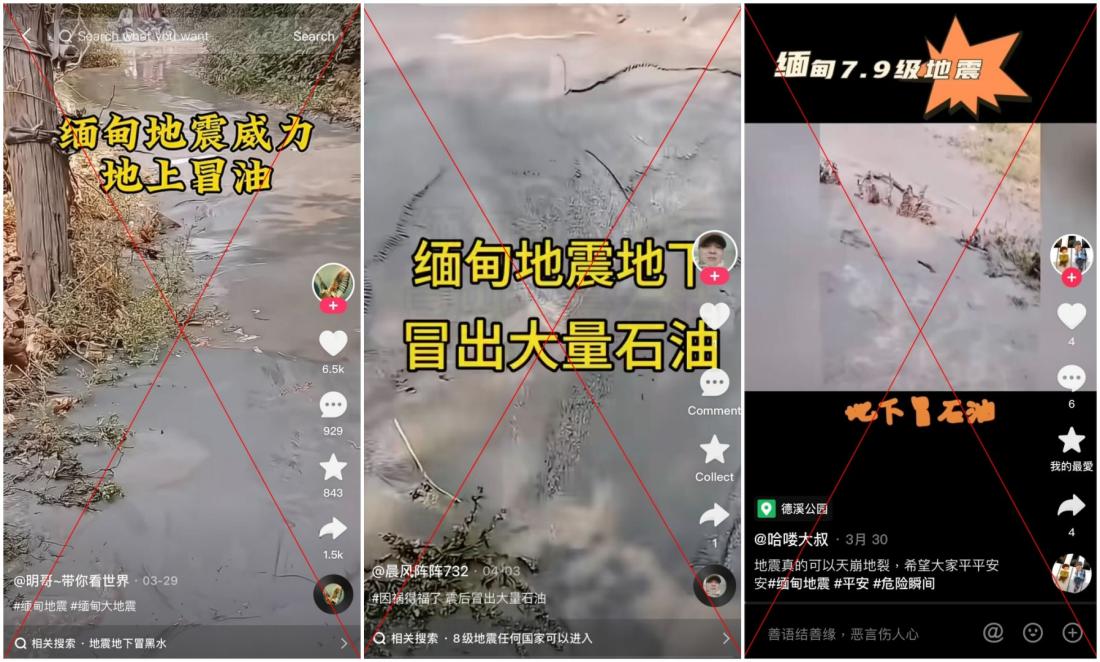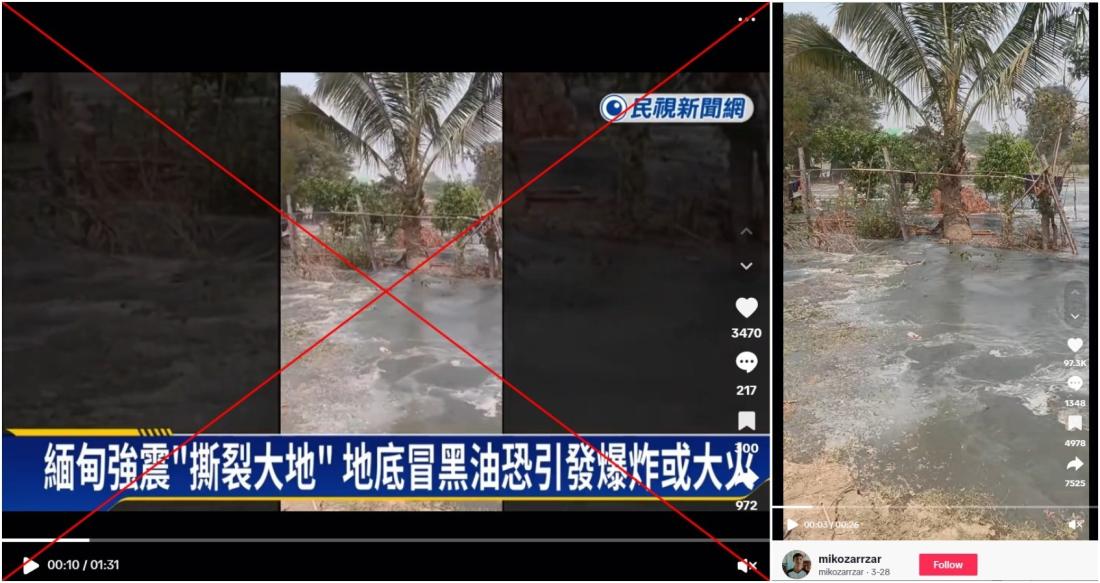
Footage of Myanmar earthquake phenomenon misrepresented as petroleum leak
- Published on April 18, 2025 at 11:08
- 3 min read
- By Tommy WANG, Chayanit ITTHIPONGMAETEE, Nyan Tun SHEIN, AFP Hong Kong, AFP Thailand, AFP Myanmar
"Myanmar's 8.2 earthquake tore the earth apart! Black oil was pouring underground, and the empty building was almost completely collapsed," reads the caption of a TikTok video uploaded March 30.
Text over the clip reads: "Myanmar quake 'rips up the earth' with black oil bubbling up from the ground, fearing explosions or fires".

The video, which includes other footage filmed during the earthquake and visuals created using artificial intelligence, is a clip aired by Formosa Television. The Taiwanese broadcaster later retracted the report and apologised for "misusing AI-generated images circulated online" (archived link).
Still, similar videos and claims have accumulated hundreds of shares on Chinese video-sharing platforms Douyin and Kuaishou.

A massive 7.7-magnitude tremor struck Myanmar's second-largest city of Mandalay on March 28. More than 60,000 people have crowded into temporary displacement sites as major cities lie devastated three weeks after the quake, according to the UN Development Programme (archived link).
Scientists told AFP the viral footage actually shows a phenomenon associated with seismic activity -- not a petroleum leak.
"This is a phenomenon known as liquefaction, which occurs when an earthquake rapidly increases the water pressure in the soil," said Jessada Denduangboripant, a professor in Chulalongkorn University's Department of Biology, on April 16 (archived link).
"It's soil pushed up to the surface, and I don't think it's petroleum as claimed."
Soil liquefaction
A reverse image search found a longer version of the TikTok video published March 28 (archived link).
A broken bridge appears around nine seconds into the video. A speaker says the bridge connects two villages over the Sittang River near the capital Naypyidaw (archived link).

Subsequent reverse image and keyword searches found some of the footage was also published on the YouTube channel Myo Taw, which described it as "groundwater overflowing from the earthquake" (archived link).
Shahar Ben-Zeev, a researcher specialising in earthquakes at the Hebrew University of Jerusalem, told AFP: "I can assure that the photos are of soil liquefaction" (archived link).
The phenomenon, often observed by seismologists, occurs when the earth itself liquefies under the power of a jolt (archived link).
Quakes sometimes hit the soil with such force that its particles come loose, according to the United States Geological Survey (USGS). Ground saturated with water starts behaving like a liquid.
"Many times the fluid flow is concentrated into preferred channels and appears at the surface as 'soil boils' where the water-grain slurry erupts," Ben-Zeev said in an April 16 email.
He said petroleum leaking "is impossible to occur without (the) pre-existence of a very shallow oil reservoir."
USGS geophysicist Susan Hough noticed the same incident during the Myanmar quake, telling American outlet Science News that it could pose a potential danger for cities in river deltas with seismic activity (archived link).
AFP has fact-checked other misinformation about the Myanmar earthquake here.
Copyright © AFP 2017-2025. Any commercial use of this content requires a subscription. Click here to find out more.
Is there content that you would like AFP to fact-check? Get in touch.
Contact us
